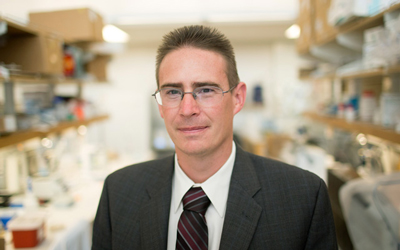
Professor Rob Knight has appointments in both CSE and Pediatrics, and the microbiome expert led a small pilot study that could have repercussions for expectant mothers -- especially those whose children were delivered by C-section. In the study published on February 1 in the journal Nature Medicine, Knight and co-authors from UC San Diego, New York University, University of Puerto Rico and Mount Sinai's Icahn School of Medicine determined that a simple swab to transfer vaginal microbes from the mother could alter the C-section-delivered newborn's microbiome (microbial makeup). The resulting microbiome then more closely resembles that of a vaginally-delivered baby. This could be important, because prior research suggests a link between C-section delivery and increased subsequent risk of obesity, asthma, allergies, atopic disease and other immune deficiencies. Furthermore, says Knight, "other research suggests that the microbiome differences between vaginal and C-section babies can persist for years."
 The latest study originated at home. “When my own child was born by unplanned C-section, we took matters into our own hands to see to it that she was exposed to vaginal microbes,” said Knight, who directs the Center for Microbiome Innovation at UC San Diego. “She is now four years old and healthy, but that was an uncontrolled experiment of one and so we can’t tell whether it had an effect, from a scientific perspective. This study now starts to prove that the effect exists, telling us that some of those vaginal microbes probably do stick around when transferred to a baby born by C-section, at least for the first month of life.”
The latest study originated at home. “When my own child was born by unplanned C-section, we took matters into our own hands to see to it that she was exposed to vaginal microbes,” said Knight, who directs the Center for Microbiome Innovation at UC San Diego. “She is now four years old and healthy, but that was an uncontrolled experiment of one and so we can’t tell whether it had an effect, from a scientific perspective. This study now starts to prove that the effect exists, telling us that some of those vaginal microbes probably do stick around when transferred to a baby born by C-section, at least for the first month of life.”
According to Knight, the pilot study "provides the proof of concept that microbiome modification early in life is possible, [but] we need substantially more children and a longer follow-up period to connect the procedure to health effects."
Read the full news release on the Jacobs School of Engineering website.
Click here to read the full academic paper in Nature Medicine.

